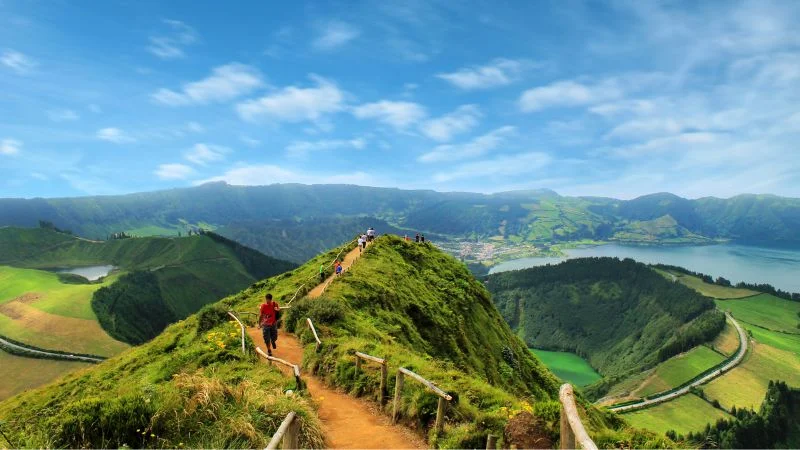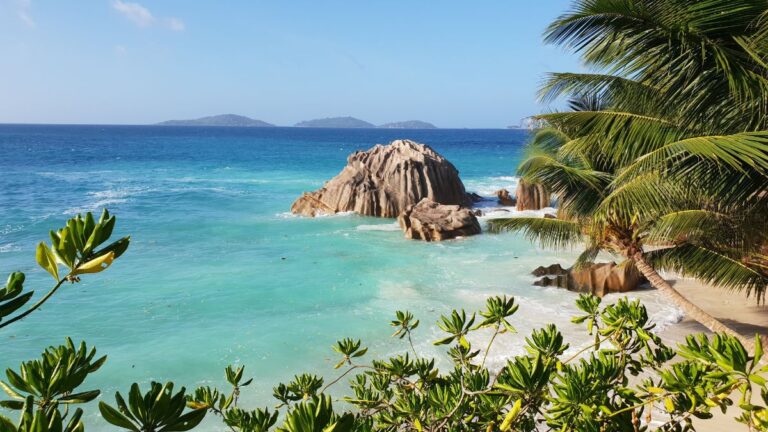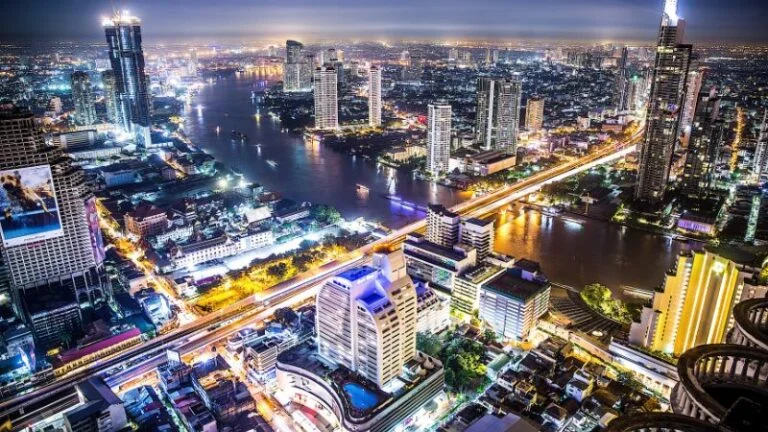50 Facts About Portugal You Need to Know Before Traveling There

As participants in Amazon Associates and other programs, we earn from qualifying purchases. This comes at no additional cost to you. For more details, see our Affiliate Disclosure.
Portugal, a country of ancient streets, whispering olives, and the endless sea, is a land where history and modernity blend seamlessly. Before you pack your bags to explore the sun-kissed beaches of the Algarve, the vibrant streets of Lisbon, or the verdant valleys of Douro, there are fascinating facts you should know. From its groundbreaking maritime discoveries that changed the world to the peculiar traditions that still thrive today, Portugal is a treasure trove of wonders. Dive into these 50 compelling facts about Portugal to enrich your journey with knowledge and appreciation for this captivating country.
The Birthplace of Age of Discoveries
Portugal is celebrated as the cradle of the Age of Discoveries, a period marked by extensive overseas exploration initiated by Portuguese navigators in the 15th century. This epoch-making era was propelled by the pioneering spirit of figures like Prince Henry the Navigator, Vasco da Gama, and Ferdinand Magellan, who sought new lands and sea routes. Their voyages led to the discovery of previously unknown territories, significantly broadening the Western world’s horizons and establishing Portugal as a global maritime power.
Lisbon Is Older Than Rome
Lisbon, the luminous capital of Portugal, boasts a history that predates many of Europe’s oldest cities, including Rome. With origins tracing back over 3,000 years, its rich tapestry of cultural influences spans Phoenicians, Romans, Moors, and Christians. This ancient city, built on seven hills, is a captivating mosaic of tradition and modernity, where age-old alleyways and historic landmarks blend seamlessly with contemporary life.
The Portuguese Language Is Globally Spoken
The Portuguese language is a global tongue, spoken by over 260 million people worldwide, making it the ninth most spoken language globally. Originating from the small Western European nation, it has spread across continents, binding Brazil, Mozambique, Angola, and other nations in a shared linguistic heritage. This expansive reach is a testament to Portugal’s historical influence on global exploration and colonization.
Home to the World’s Oldest Bookstore
Lisbon houses the world’s oldest operating bookstore, Bertrand Livreiros, founded in 1732. Nestled in the city’s historic Chiado neighborhood, this bookstore has survived earthquakes and societal changes, offering generations of readers a sanctuary of knowledge and literature. Its longevity is a tribute to Portugal’s deep-rooted literary tradition and the enduring value of books in Portuguese culture.
Portugal Has the Longest Bridge in Europe
The Vasco da Gama Bridge in Lisbon is a marvel of modern engineering and the longest bridge in Europe, stretching 17.2 kilometers (about 10.7 miles) across the Tagus River. Completed in 1998, it exemplifies Portugal’s forward-looking infrastructure initiatives and offers a breathtaking gateway to Lisbon, enhancing connectivity while reducing traffic congestion in the capital.
A Country with a Rich Wine Heritage
Portugal’s wine heritage is as deep and varied as its landscape, from the lush, verdant Minho region to the sun-drenched Alentejo. Portuguese wines, including the famous Port and Vinho Verde, reflect a tradition that dates back over 2,000 years. This rich viticultural history is a cornerstone of Portuguese culture, contributing to the country’s reputation as a producer of unique and high-quality wines.
The Heart of Cork Production
Portugal is the world’s leading producer of cork, a sustainable and versatile material harvested from the bark of the cork oak tree, predominantly in the Alentejo region. This environmentally friendly industry is integral to the country’s economy, producing more than half of the world’s cork supply. Portuguese cork is used in everything from wine stoppers to spacecraft, showcasing the material’s incredible diversity and ecological benefits.
The Portuguese Tempura
The origins of tempura, a culinary technique often associated with Japanese cuisine, can surprisingly be traced back to 16th-century Portuguese missionaries and traders in Japan. This method of batter-frying food was adapted by the Japanese and has since become a staple of their cuisine. The Portuguese influence on global culinary traditions is a testament to the country’s historical role in cross-cultural exchanges.
Fado: The Soulful Sound of Portugal
Fado music is the heartrending sound of the Portuguese soul, characterized by mournful tunes and lyrics that express saudade, a deep sense of longing and melancholy. Emerging in the early 19th century in Lisbon, Fado has been recognized by UNESCO as an Intangible Cultural Heritage, embodying the spirit of Portugal and its people’s connection to the sea, fate, and love lost.
Portugal’s Influence on Japanese Tempura
The culinary exchange between Portugal and Japan during the Age of Discoveries left a lasting mark on Japanese cuisine, notably in the adoption of tempura. This method of batter-frying was introduced by Portuguese visitors and has since evolved into a beloved Japanese dish. The seamless integration of Portuguese culinary practices into Japanese food culture underscores the profound impacts of early global exploration.
Sintra: A Fairy-Tale Town
Nestled amidst the lush Sintra Mountains, the town of Sintra is like a page from a fairy tale, with its opulent palaces, ancient ruins, and mystical forests shrouded in mist. This UNESCO World Heritage site has captivated kings, poets, and travelers for centuries with its romantic allure and architectural wonders, such as the Pena Palace and the Moorish Castle, making it a must-visit for anyone exploring Portugal.
The Legend of the Rooster of Barcelos
The Rooster of Barcelos is one of Portugal’s most iconic symbols, rooted in a legend about faith, justice, and luck. According to folklore, a dead rooster miraculously crowed to prove a pilgrim’s innocence in a medieval trial. Today, colorful ceramic roosters symbolize this legend, embodying the Portuguese values of honesty and integrity, and are popular souvenirs for visitors.
Portugal’s Cherry Tradition: Ginja
Ginja, or ginjinha, is a traditional Portuguese liqueur made from sour cherries, known as ginja berries, infused with alcohol and sugar. This sweet, slightly tart concoction is especially popular in Lisbon and Óbidos, where it’s served in chocolate cups or as a shot, offering a taste of Portugal’s rich gastronomic traditions and its affection for local produce and recipes.
The Azores: Europe’s Hawaii
The Azores, an archipelago in the mid-Atlantic, is often referred to as Europe’s answer to Hawaii. This enchanting group of nine islands is renowned for its volcanic landscapes, crystal-clear lakes, and thermal springs. A paradise for nature lovers and adventure seekers, the Azores offer a unique blend of natural beauty, rich maritime history, and vibrant cultural heritage, making it a perfect escape into nature’s embrace.
Portugal’s Pink Street
Lisbon’s Rua Nova do Carvalho, better known as Pink Street, has transformed from a seedy dockside area into one of the city’s most vibrant nightlife hotspots. This pedestrian street, painted a bright pink, is lined with bars, clubs, and restaurants, offering a lively and inclusive atmosphere. Pink Street is a testament to Lisbon’s dynamic urban renewal and its ability to reinvent and celebrate its spaces.
The Trams of Lisbon: A Journey Back in Time
The iconic yellow trams of Lisbon, particularly Tram 28, offer a nostalgic journey through the city’s historic neighborhoods. These vintage streetcars rattle and hum through the narrow streets of Alfama, Graca, and beyond, providing not just a mode of transportation but a rolling window into Lisbon’s soulful character and its layered history, from its Moorish roots to contemporary vibrancy.
Portugal and the United Kingdom: The World’s Oldest Alliance
The Anglo-Portuguese Alliance, ratified by the Treaty of Windsor in 1386, stands as the world’s oldest alliance still in force. This historic bond was formed primarily for mutual aid against common foes and has endured through centuries of European conflicts, colonial expansion, and modern diplomatic challenges. It exemplifies the longstanding friendship and cooperation between Portugal and the United Kingdom.
Surf’s Up: Portugal’s Surfing Havens
Portugal is a premier destination for surfers, boasting some of the best waves in Europe along its vast Atlantic coastline. From the monster waves at Nazaré to the consistent swells of Ericeira, the country’s diverse surf spots cater to all levels, from novices to professional surfers. Portugal’s surfing culture is a vibrant part of its coastal lifestyle, drawing enthusiasts from around the globe.
The Sanctuary of Fátima: A Pilgrim’s Haven
The Sanctuary of Fátima, located in central Portugal, is one of the most significant Marian shrines in the world, attracting millions of pilgrims and visitors each year. The shrine commemorates the 1917 apparitions of the Virgin Mary to three shepherd children, offering a message of peace and repentance. Fátima’s tranquil and sacred atmosphere provides a space for reflection, prayer, and spiritual renewal.
The Mystery of the Templars in Portugal
The Knights Templar, a medieval Christian military order, played a pivotal role in Portugal’s early history, contributing to the Reconquista and the establishment of the Portuguese state. The Convent of Christ in Tomar, a UNESCO World Heritage site, stands as a testament to the Templars’ architectural and cultural legacy. The order’s mysterious history and legends continue to fascinate historians and visitors alike, weaving a tapestry of intrigue and spirituality.
Portugal’s Timeless Tiles: Azulejos
Azulejos, the colorful ceramic tiles that adorn Portugal’s buildings, are a hallmark of Portuguese aesthetics, blending Moorish tradition with local artistry. These tiles are not merely decorative but tell stories of the nation’s history, culture, and daily life, covering walls of churches, palaces, homes, and train stations. The art of azulejo-making reflects Portugal’s commitment to preserving its artistic heritage while embracing innovation.
The Sardine Capital of the World
Portugal, particularly the city of Lisbon, is renowned as the sardine capital of the world. The Portuguese have elevated the humble sardine to a cultural icon, celebrated in annual festivals, particularly during the popular Santo António festivities. Grilled, canned, or served in a myriad of traditional dishes, sardines are a staple of Portuguese cuisine, embodying the country’s long-standing connection to the sea.
A Coffee Lover’s Paradise
Coffee culture is deeply ingrained in Portuguese society, where a café is a cornerstone of community life. The Portuguese take their coffee seriously, favoring espressos, known locally as “bica,” savored at any time of the day. This passion for coffee is more than a daily ritual; it’s a moment of pause and enjoyment, reflecting the Portuguese emphasis on simplicity, quality, and tradition.
Portugal’s Pioneering Role in Age of Exploration
Portugal’s pioneering role in the Age of Exploration set the stage for the first wave of globalization, opening up new sea routes to Africa, Asia, and the Americas. This era of discovery was driven by advancements in navigation, shipbuilding, and cartography, with Portuguese explorers leading the way in mapping the unknown and establishing maritime trade routes. Portugal’s navigational feats reshaped the world, laying the groundwork for the modern age of exploration and trade.
The Iconic Portuguese Pavements
The intricate mosaic pavements, or “calçada portuguesa,” that grace the streets of Portugal’s towns and cities are a signature aspect of the country’s urban landscape. Crafted from small, hand-cut pieces of limestone and basalt, these pavements are not only functional but also a form of artistic expression, depicting historical events, cultural symbols, and geometric patterns. This traditional craftsmanship is a testament to Portugal’s artistic heritage and its dedication to beautifying public spaces.
Madeira: The Island of Eternal Spring
Madeira, known as the “Island of Eternal Spring,” is a lush, volcanic island in the Atlantic Ocean, celebrated for its mild climate, stunning landscapes, and rich botanical gardens. This Portuguese archipelago offers a mesmerizing blend of natural beauty, from dramatic cliffs and pebbled beaches to terraced vineyards and laurel forests, inviting exploration and relaxation in equal measure. Madeira’s unique cultural and natural treasures make it a paradise for travelers seeking serenity and adventure.
The Lusitano: Portugal’s Noble Horse Breed
The Lusitano is a noble horse breed indigenous to Portugal, esteemed for its grace, intelligence, and agility. Originating from the Iberian Peninsula, these horses were highly valued by Portuguese nobility for riding and bullfighting, a tradition that continues to this day. The Lusitano’s elegance and athleticism embody the deep equestrian culture in Portugal, where horse breeding and riding are cherished aspects of national heritage.
Portuguese Gastronomy: A Culinary Journey
Portuguese gastronomy is a delectable journey through the country’s rich culinary landscape, characterized by its simplicity, diversity, and the freshness of ingredients. From the savory taste of bacalhau (codfish) in countless preparations to the sweet indulgence of pastéis de nata, Portuguese cuisine reflects a blend of Mediterranean influences and its seafaring heritage. This culinary diversity is a celebration of Portugal’s regional specialties and its history of global exploration.
The Medieval Marvel of Óbidos
Óbidos, a charming medieval town encircled by ancient walls, is a jewel in Portugal’s crown. With its cobbled streets, whitewashed houses adorned with bougainvillea, and imposing castle now serving as a hotel, Óbidos captivates visitors with its historical ambiance and cultural vitality. The town is especially famous for its chocolate festival and the traditional Ginja served in edible chocolate cups, blending heritage with culinary delight.
The Douro Valley: A UNESCO World Heritage Site
The Douro Valley, a UNESCO World Heritage Site, is one of the oldest wine-producing regions in the world, famed for its terraced vineyards that elegantly snake along the Douro River. This picturesque landscape not only yields the renowned Port wine but also tells a story of human endeavor to cultivate the rugged terrain. A visit to the Douro Valley offers an immersive experience in Portugal’s winemaking tradition, amidst breathtaking natural scenery.
Portuguese: The Language of Poetry and Prose
Portuguese, the language of Camões, Pessoa, and Saramago, is a language of poetry and prose, deeply expressive and rich in literary heritage. It serves as a vessel for Portugal’s cultural identity, carrying the soul of its people and their stories across oceans and generations. The Portuguese language is a testament to the country’s historical depth, its contributions to world literature, and the unifying thread among Lusophone countries.
The Portuguese Riviera: Cascais and Estoril
The Portuguese Riviera, comprising the coastal towns of Cascais and Estoril, is a glamorous retreat for both locals and visitors. With its elegant villas, luxurious resorts, and picturesque beaches, this area has long been a favorite escape for royalty and celebrities alike. The Riviera’s charm is complemented by its cultural offerings, including art galleries, museums, and a vibrant culinary scene, making it a perfect blend of leisure and luxury.
Portugal’s Revolutionary Carnation Revolution
The Carnation Revolution of April 25, 1974, marks a pivotal moment in Portugal’s history, when a non-violent military coup led to the fall of Europe’s longest-running dictatorship. This revolution, symbolized by the carnations soldiers and civilians placed in gun barrels, transitioned Portugal towards democracy and independence for its colonies. It remains a powerful example of peaceful change and the enduring desire for freedom and social justice.
Coimbra: A City of Knowledge
Coimbra, home to one of the oldest universities in Europe, is a city steeped in knowledge and tradition. The University of Coimbra, established in 1290, is a UNESCO World Heritage site, renowned for its historic buildings, stunning library, and vibrant academic community. Coimbra exudes a youthful energy, with its medieval streets, lively cafés, and rich cultural scene, making it a nexus of education, history, and innovation in Portugal.
The Majestic Palaces of Portugal
Portugal’s landscape is dotted with majestic palaces that reflect the country’s rich architectural heritage and royal past. From the romantic Pena Palace in Sintra to the opulent Queluz National Palace, these structures are masterpieces of design, blending Moorish, Manueline, and Baroque elements. Each palace tells a unique story of Portugal’s history, art, and culture, inviting visitors to step into a world of regal splendor and architectural beauty.
The Algarve: Europe’s Sunny Corner
The Algarve, Portugal’s southernmost region, is renowned for its breathtaking cliffs, golden beaches, scalloped bays, and sunny skies. This paradise is not only a haven for sunseekers but also a hub for outdoor activities, including golf, surfing, and hiking. The Algarve’s charming towns, vibrant markets, and delicious seafood offer a taste of Portuguese hospitality, making it an essential destination for travelers seeking relaxation and adventure in equal measure.
Portugal’s Unique Manueline Architecture
Manueline architecture, unique to Portugal, is an ornate style that flourished during the reign of King Manuel I in the late 15th and early 16th centuries. This architectural style is characterized by intricate designs inspired by the Age of Discoveries, incorporating maritime elements, Gothic and Renaissance influences, and symbols of the Portuguese explorations. Notable examples include the Jerónimos Monastery and the Belém Tower in Lisbon, showcasing Portugal’s creativity and its pivotal role in global exploration.
The Mysterious Capelinhos Volcano
The Capelinhos Volcano on the island of Faial in the Azores represents one of the most recent volcanic eruptions in Portugal, occurring in 1957-58. This event significantly expanded the island’s territory and left a surreal landscape of ash and lava formations. The Capelinhos Volcano, now a fascinating site for scientific study and tourism, tells a story of nature’s power and the dynamic earth, offering visitors a unique glimpse into the forces that shape our planet.
Portugal’s Vibrant Festivals and Traditions
Portugal’s calendar is replete with vibrant festivals and traditions that celebrate its rich cultural heritage and religious history. From the lively streets of Lisbon during Santo António to the ancient pagan rituals of the winter solstice in the north, these festivities are a colorful tapestry of music, dance, and communal spirit. They reflect the Portuguese people’s love for celebration, their deep-rooted history, and their commitment to preserving their traditions while welcoming the future.
The Golden Visa: Portugal’s Welcome to the World
Portugal’s Golden Visa program offers a gateway for non-EU citizens to gain residency through investment, attracting entrepreneurs and investors to the country. Launched in 2012, this program has been pivotal in boosting the Portuguese economy and diversifying the country’s demographic landscape. The Golden Visa is a testament to Portugal’s openness and its forward-thinking approach to global integration and multiculturalism.
The Mighty Monastery of Batalha
The Monastery of Batalha, a UNESCO World Heritage site, is a masterpiece of Gothic and Manueline architecture, commissioned by King João I in the 14th century to commemorate the Portuguese victory at the Battle of Aljubarrota. This monument is a symbol of Portuguese resilience and creativity, with its intricate stonework, breathtaking cloisters, and the poignant Unfinished Chapels reflecting the nation’s rich history and architectural innovation.
Cristiano Ronaldo: Portugal’s Football Legend
Cristiano Ronaldo, hailing from the Madeira Islands, is not just a global football icon but also a national hero in Portugal. His extraordinary talent, work ethic, and philanthropy have earned him accolades and fans worldwide, cementing his status as one of the greatest footballers of all time. Ronaldo’s achievements on the field and his contributions off it continue to inspire young athletes and bring pride to the Portuguese people.
Portugal’s Olive Oil: Liquid Gold
Portugal’s olive oil, known for its quality and distinctive flavors, is a cornerstone of the country’s culinary tradition. Produced from centuries-old olive groves that dot the landscape, Portuguese olive oil is celebrated for its nutritional value and versatility in cooking. This “liquid gold” is a testament to the country’s agricultural heritage, the skill of its producers, and the growing global appreciation for this essential ingredient of Mediterranean cuisine.
The Berlengas Archipelago: Portugal’s Hidden Gem
The Berlengas Archipelago, off the coast of Peniche, is a hidden gem of Portugal’s natural beauty. This UNESCO Biosphere Reserve consists of rugged islands known for their crystal-clear waters, secluded beaches, and rich biodiversity. The archipelago is a haven for nature lovers, offering opportunities for hiking, bird watching, and snorkeling, showcasing Portugal’s commitment to preserving its stunning natural landscapes and marine habitats.
Portugal and the Sea: A Maritime Love Affair
Portugal’s history, culture, and identity are intrinsically linked to the sea, reflecting a millennia-old bond that has shaped the nation’s destiny. From the Age of Discoveries to contemporary times, the sea has been a source of sustenance, exploration, and inspiration. This maritime love affair continues to influence Portugal’s economy, cuisine, and way of life, underscoring the profound connection between the Portuguese people and the vast ocean that lies at their doorstep.
Pastéis de Nata: Portugal’s Beloved Pastry
Pastéis de nata, a custard tart dusted with cinnamon and powdered sugar, is Portugal’s most beloved pastry. Originating from the Jerónimos Monastery in Belém, Lisbon, in the 18th century, this delicacy has won the hearts of locals and visitors alike. The warm, creamy texture of the custard, combined with the crisp, flaky pastry, makes pastéis de nata a quintessential taste of Portugal, embodying the country’s rich culinary traditions and its love for simple, delicious treats.
The Seven Wonders of Portugal
In 2007, Portugal celebrated its rich cultural and natural heritage by selecting the Seven Wonders of Portugal. This list, which includes the Belém Tower, Jerónimos Monastery, Pena National Palace, and others, highlights the country’s diverse architectural styles and historical epochs. These monuments are not just tourist attractions but symbols of Portugal’s history, creativity, and the enduring legacy of its people’s craftsmanship and vision.
Portugal’s Contribution to World Music
Portugal’s contribution to world music extends beyond the melancholic strains of Fado. The country has a vibrant music scene that blends traditional sounds with contemporary influences, creating a rich tapestry of genres that resonate globally. From the traditional folk music of the Minho region to the Afro-Portuguese beats of Lisbon’s urban neighborhoods, Portugal continues to make its mark on the world music stage, showcasing the diversity and dynamism of its cultural expression.
The Age of Portuguese Cinema
The Age of Portuguese Cinema has been marked by a rich history of storytelling, innovation, and artistic exploration. From the pioneering works of Manoel de Oliveira to the contemporary achievements of filmmakers like Pedro Costa and Miguel Gomes, Portuguese cinema has carved a unique niche in the international film community. This creative vitality reflects Portugal’s broader cultural landscape, where cinema is celebrated as a medium for exploring identity, history, and the human condition.
Living History: Portugal’s Historical Villages
Portugal’s historical villages are living museums, nestled in the country’s mountains and valleys, each telling a unique story of resilience, tradition, and community. These villages, with their stone houses, medieval castles, and ancient customs, offer a glimpse into Portugal’s past and the enduring spirit of its people. They are a testament to the country’s rich history, offering visitors a chance to step back in time and experience the timeless beauty of Portugal’s rural heritage.






